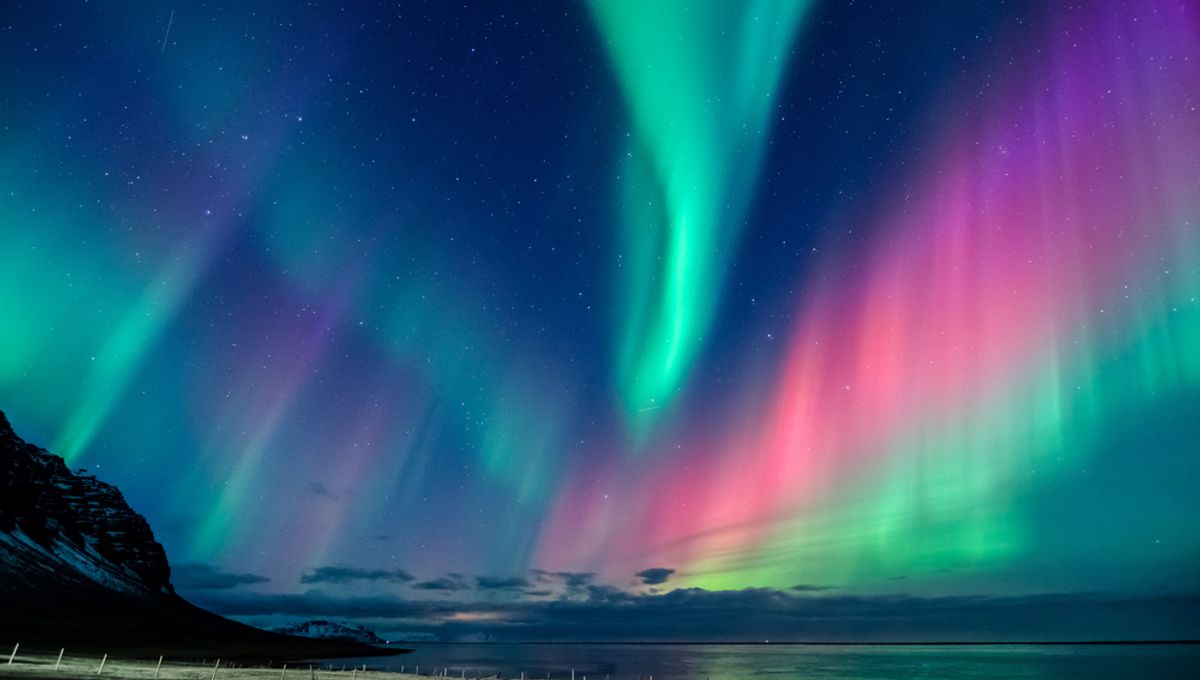
A major coronal hole has opened up in the Sun’s atmosphere and is now pointing almost straight at us. Such events are usually associated with an increase in solar wind speed and interplanetary magnetic field strength. If the location on the Sun is right, this can lead to geomagnetic storms and auroral activity as the charged particles encounter the Earth’s magnetic field. NASA is anticipating a G2 (moderate)-sized storm for the night of March 24.
Although there is always some uncertainty associated with such events, the closest comparable past coronal holes have led to aurora being seen as far south as New York and Seattle. No serious damage is anticipated, however. This is no Carrington event.
The most likely time to see auroras will be on Friday night this week, but G1-level geomagnetic storms on Thursday and Saturday could create a show for those closer to the Earth’s magnetic poles.
Then again, some places are already getting in early.
The Sun has a number of forms of activity that can cause sudden interference in the Earth’s magnetosphere. Solar flares are probably the best known, while coronal mass ejections (CMEs) can be particularly disruptive. Coronal holes are less well known, partly because they are seen in the extreme ultraviolet and X-ray part of the spectrum, not in visible light, and were not detected until the 1960s. Nevertheless, they’re influential enough that solar observers of solar activity take careful note.
Although coronal holes are quite common, most are restricted to near the Sun’s poles, where their activity has little effect on Earth. As this video below of the current hole shows, some expand towards the equator and become more likely to send their activity our way.
Just as sunspots mark cooler regions on the Sun itself, coronal holes are composed of lower-than-usual temperature plasma in the Sun’s atmosphere, known as its “corona” because it looks like a crown during a solar eclipse. The holes look dark in images taken at appropriate wavelengths.
Instead of the Sun’s magnetic field forming loops that impede charged particles’ escape, during coronal holes the field reaches into space, and charges can escape along the field lines. The result is a coronal hole high-speed stream that can rush out rapidly and be funneled by the magnetic fields of any planets lucky enough to have them toward their poles.
As with sunspots and other sorts of solar activity, coronal holes can happen at any time, but are affected by the 11-year solar cycle. However, their frequency, at least near the solar equator, is counter-cyclical, peaking near the solar minimum when other sorts of solar activity drop off.
Source Link: Massive Hole In Sun's Atmosphere Cracked Open And Auroras Are Coming